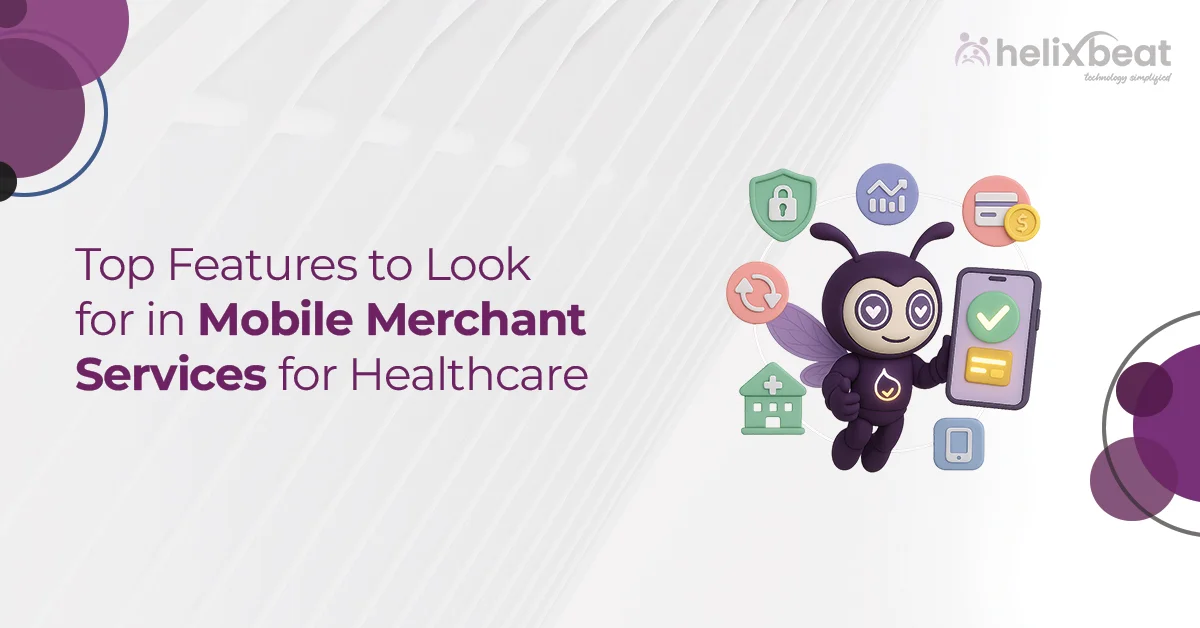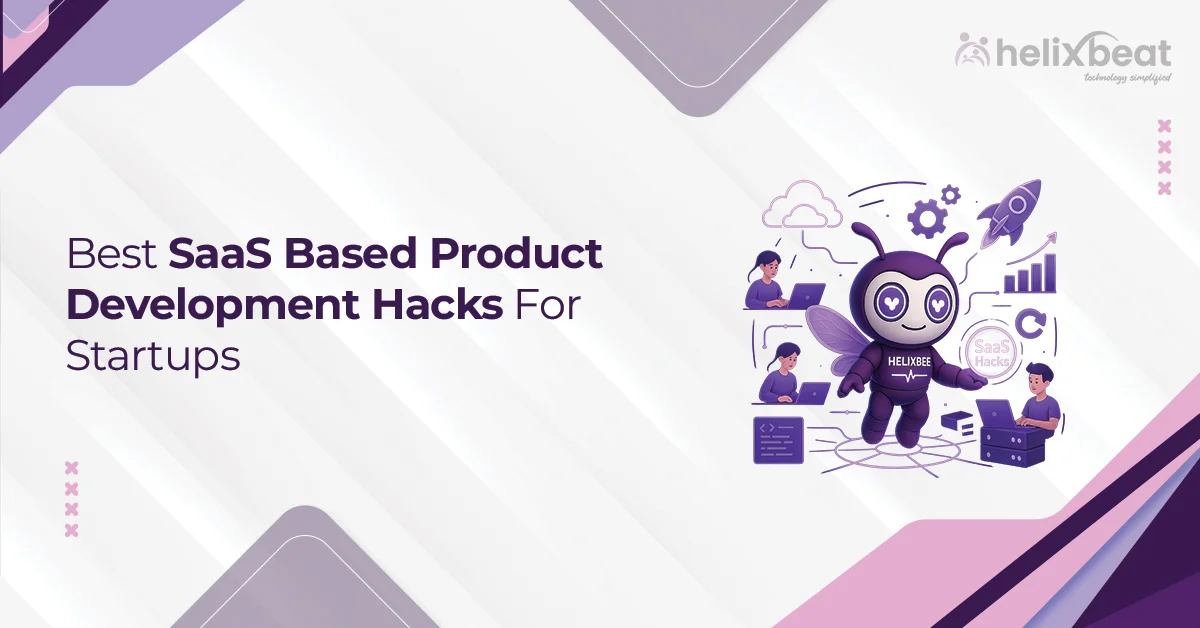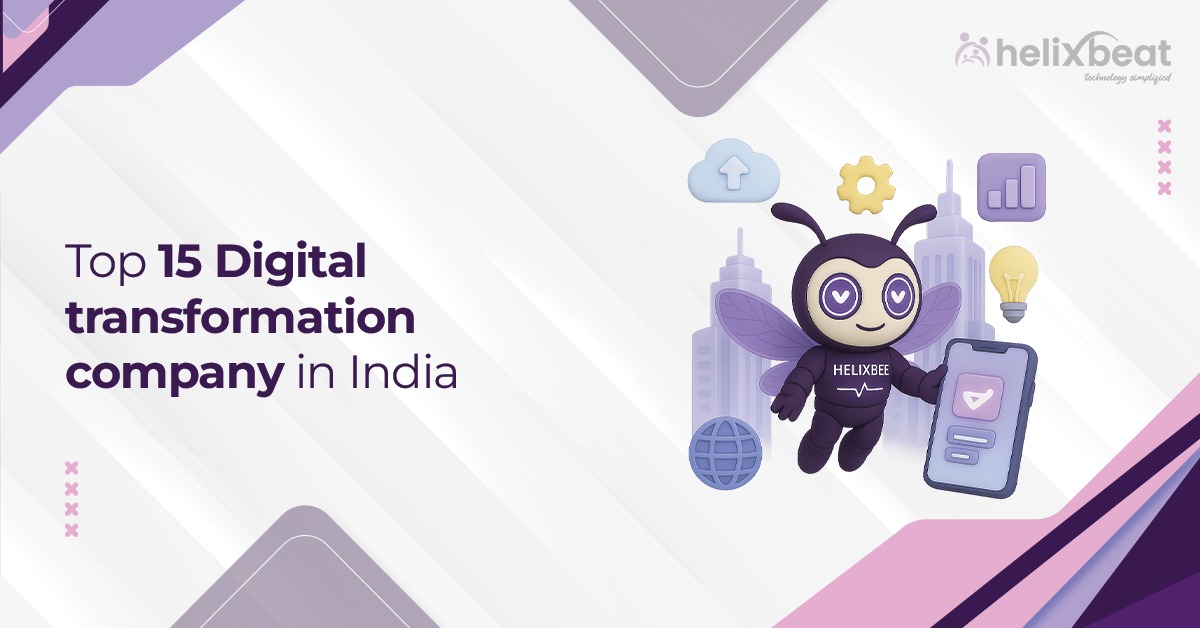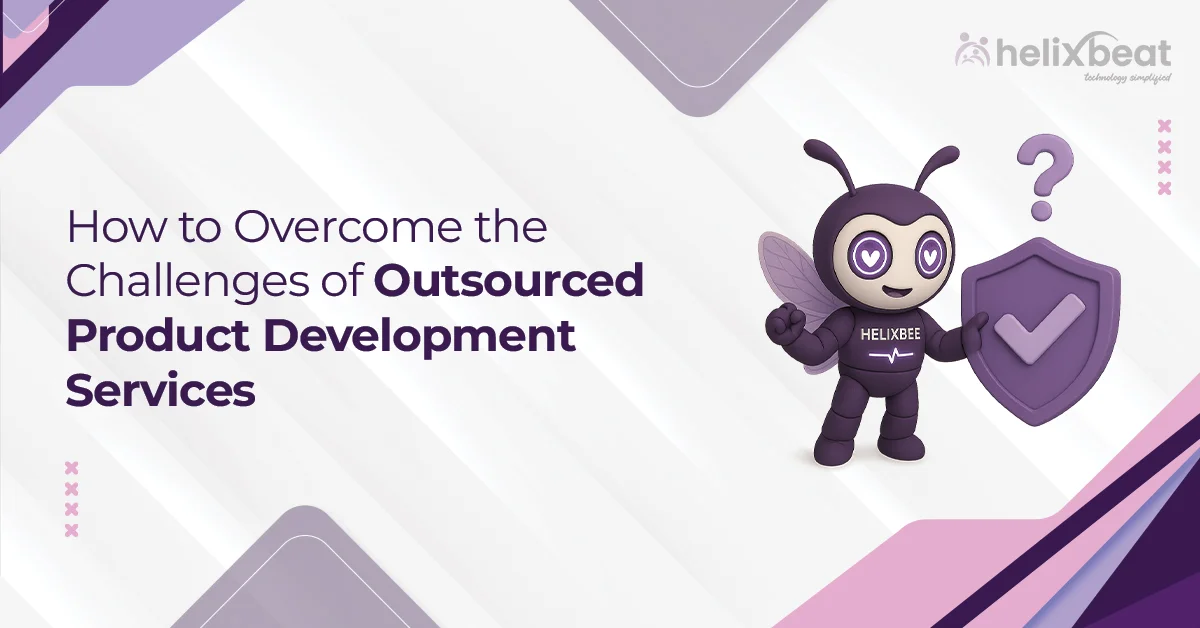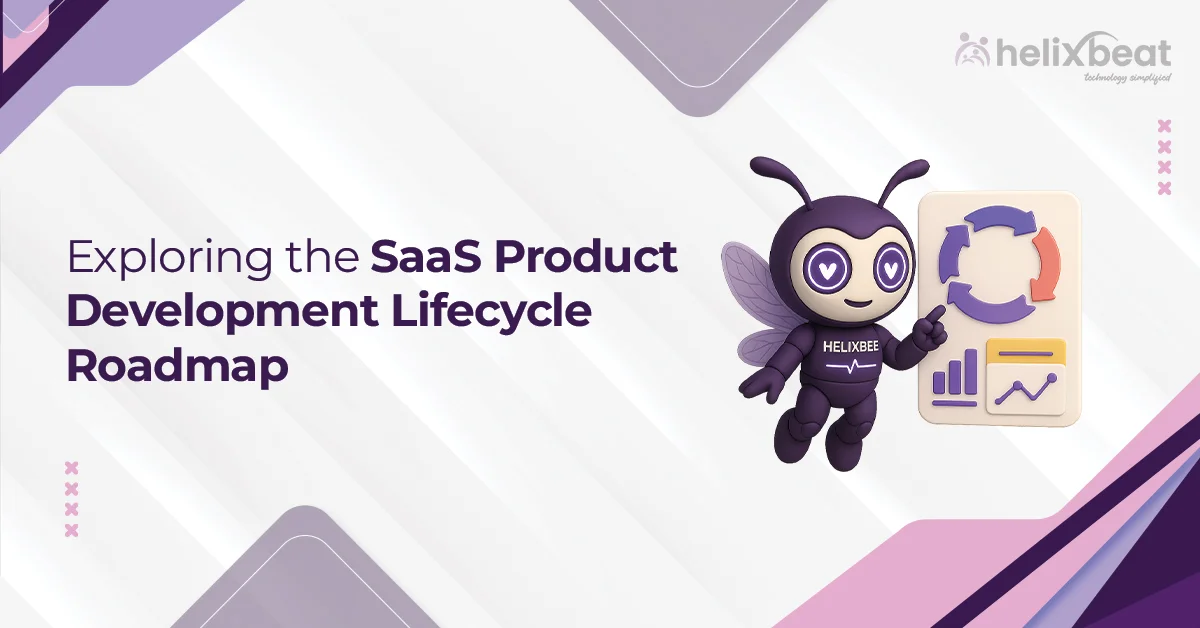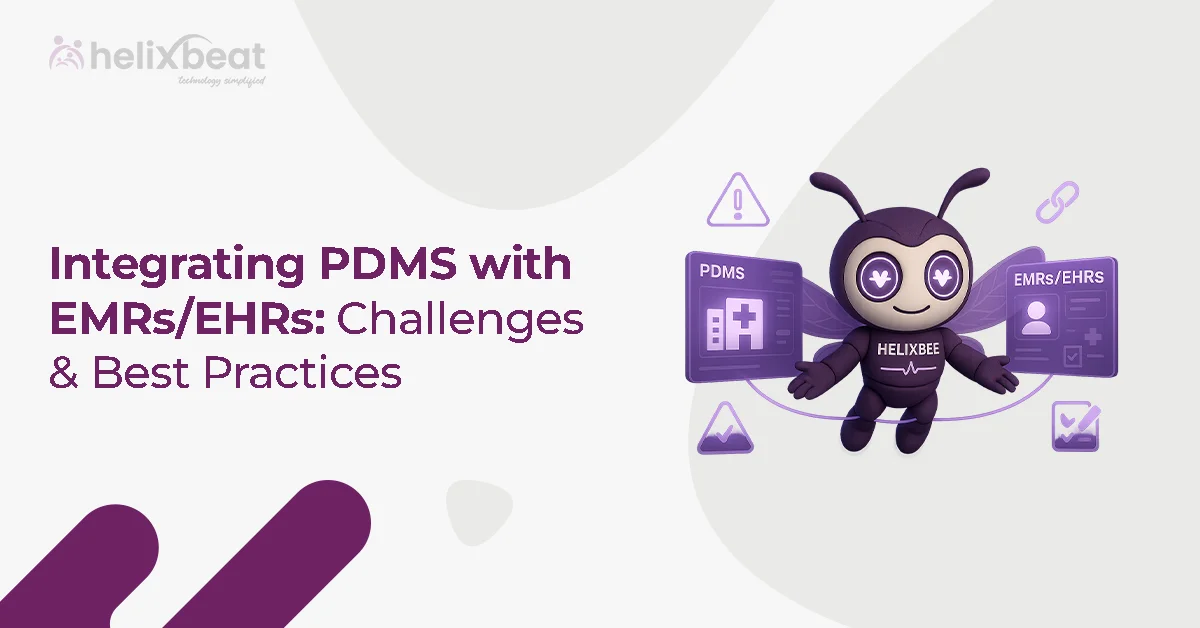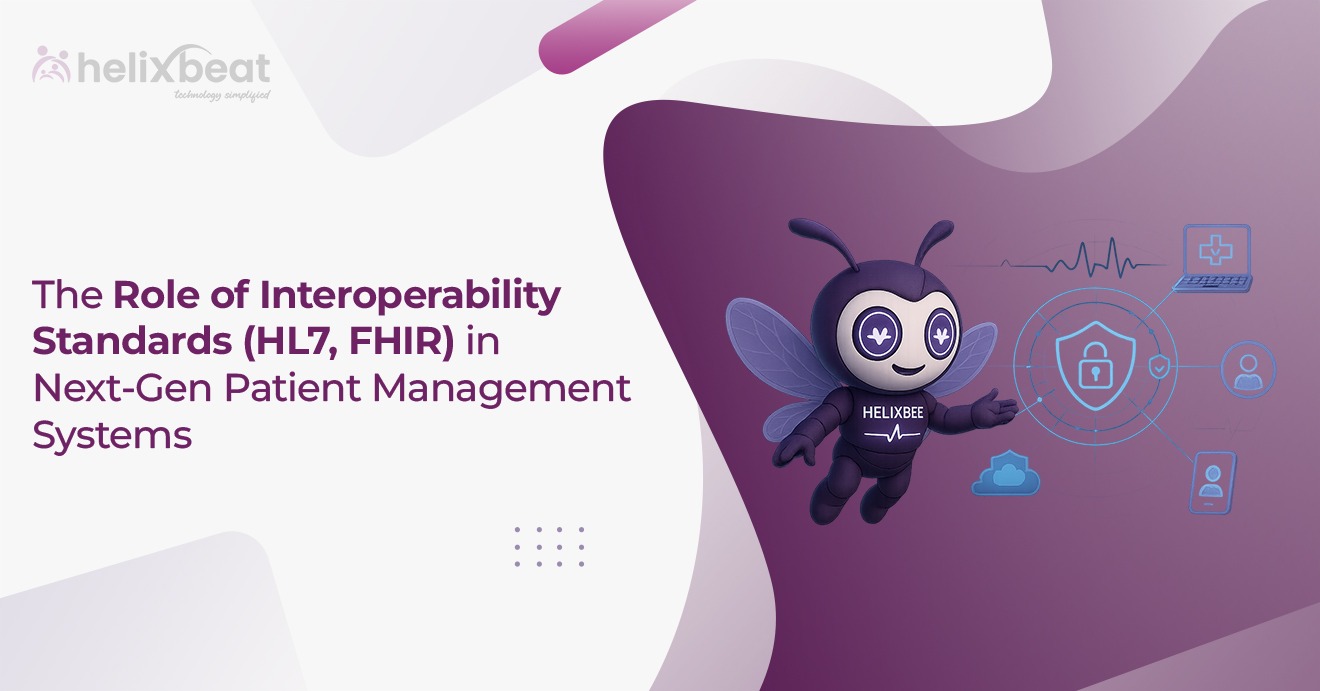First impressions matter—and in today’s fast-moving, security-conscious world, the way you welcome visitors says a lot about your organization. A digital visitor management system does more than just replace the sign-in sheet; it modernizes the entire front-desk experience. Think paperless visitor registration, instant host notifications, automated visitor processing, and seamless digital check-in advantages—all designed to save time, reduce risk, and leave a lasting impression.
Now, when it comes to choosing the right setup, businesses are often torn between two solid options: a cloud-based solution or an on-premise system. Each offers distinct benefits and trade-offs, and what works for one company might not suit another.
In this blog, we’ll explore the key differences, pros and cons, and real-world use cases to help you figure out which visitor management model is the right fit for your needs. Ready to upgrade how you manage visitors? Let’s explore your options.
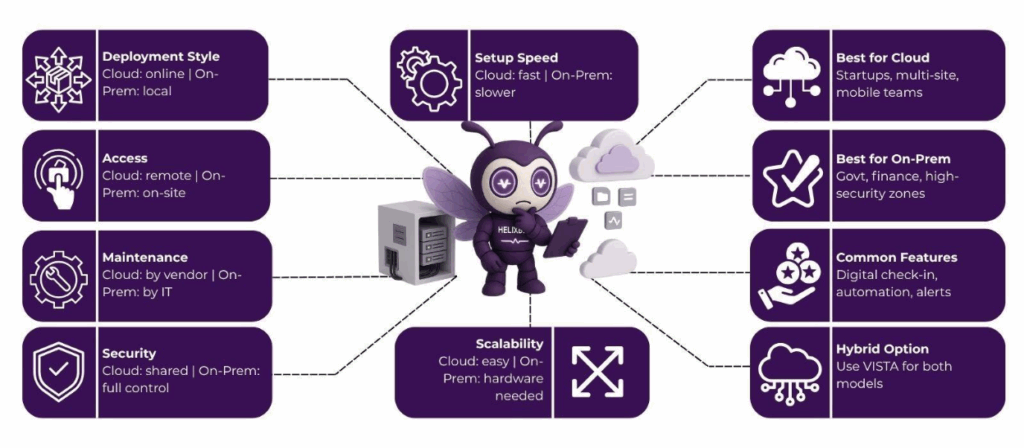
Table of Contents
What is a Cloud-Based and On-Premise Visitor Management System?
When it comes to modernizing front desk operations, a digital visitor management system is essential. But not all systems are built the same—especially when it comes to how they’re deployed. The two most common models are cloud-based and on-premise.
A cloud-based visitor management system is hosted on secure external servers and accessed through the internet. This means you can manage visitor check-ins, view reports, and update settings from any device, anywhere. The software provider handles everything behind the scenes—updates, backups, security, and technical support—making it a stress-free option for companies without large IT teams. It’s ideal for businesses that prioritize flexibility, speed, and scalability.
On the other hand, an on-premise visitor management system is hosted internally on your company’s servers. It gives you full control over your data, security protocols, and system configurations. However, it also requires dedicated IT resources for maintenance, software updates, and troubleshooting. This model is often preferred by industries with strict compliance needs or highly sensitive information.
Both systems support paperless visitor registration, enable automated visitor processing, and deliver the digital check-in advantages that businesses now expect—just through different infrastructures
Difference Between Cloud-Based and On-Premise Systems
| Feature | Cloud-Based System | On-Premise System |
| Deployment | Hosted remotely via internet | Installed on local servers |
| Accessibility | Access from anywhere | Restricted to internal network |
| Maintenance | Handled by vendor | Managed by internal IT |
| Scalability | Easy to scale with business growth | Requires hardware expansion |
| Upgrades | Automatic and frequent | Manual and often delayed |
| Security Control | Vendor-led security protocols | Full internal control |
Advantages of a Cloud-Based Visitor Management System
- Remote Access & Flexibility
One of the top digital check-in advantages is the ability to manage visitors remotely. Security officers, HR teams, or admins can monitor entries from any location—perfect for multi-site companies.
- Quick Implementation
No hardware installations or complex configurations—just subscribe, set up your branding, and go live. Cloud systems like VISTA make deployment seamless.
- Scalable for Growth
Whether you’re managing 1 or 100 offices, scaling a cloud-based system is just a matter of upgrading your subscription.
- Cost-Effective
Cloud-based platforms operate on a subscription model, saving you from hefty upfront costs for hardware, server rooms, and IT manpower.
- Real-Time Updates & Insights
Get instant alerts, visitor data, and dashboards in real time. It’s one of the strongest digital check-in advantages for safety-conscious organizations.
- Automatic Backups & Software Updates
Say goodbye to manual patches. Your software is always up to date with the latest features and security protocols.
- Paperless Visitor Registration
Reduce waste and wait times by eliminating paper logs. Visitors can pre-register, receive QR codes, and check in within seconds.
Disadvantages of a Cloud-Based Visitor Management System
- Dependent on Internet Connectivity
If your internet goes down, your check-in process could be disrupted.
- Data Hosted Externally
Some industries require sensitive data to stay within internal servers—cloud hosting may not meet strict compliance mandates.
- Recurring Costs
While initial costs are low, the ongoing subscription fees could add up over time for larger enterprises.
- Customization Limitations
Most cloud platforms offer standard workflows; deep customizations might require premium plans or vendor involvement.
Who Needs a Cloud-Based Visitor Management System?
A cloud-based digital visitor management system is ideal for:
- Multi-location offices needing centralized visitor tracking
- Startups and SMEs with limited IT infrastructure
- Co-working spaces, where visitor volume and user type change frequently
- Real estate or field service companies needing mobile access
- Education and healthcare sectors needing touchless, automated visitor processing
If your priority is flexibility, ease of use, and fast setup—cloud is your go-to.
Advantages of an On-Premise Visitor Management System
- Full Data Control & Ownership
Store all visitor information within your physical premises—great for high-security zones.
- Customization Freedom
You have complete control over UI, workflows, integrations, and access rules.
- Offline Availability
No internet? No problem. On-premise solutions can work with local network access.
- Compliance with Industry Standards
Certain industries (e.g., defense, banking) demand that data never leave internal servers. On-prem systems ensure compliance.
- Enhanced Internal Security
When security must be airtight, relying on internal IT policies offers more peace of mind.
Disadvantages of an On-Premise Visitor Management System
- Higher Upfront Investment
Servers, storage, licenses, IT teams—it all adds up.
- Maintenance Overhead
Patches, security updates, and backups must be done manually by your IT team.
- Limited Accessibility
Remote access is harder to set up and often comes with VPN-related hassles.
- Slower Deployment
Setting up infrastructure can take weeks or even months.
- Scaling Challenges
Growth may require new hardware or network upgrades, increasing time and costs.
Who Needs an On-Premise Visitor Management System?
An on-premise digital visitor management system suits:
- Government organizations with strict data policies
- Banks and financial institutions requiring total control
- Defense and military installations with high-security zones
- Industrial plants or legacy buildings with poor internet infrastructure
- IT enterprises with in-house server infrastructure already in place
When data sensitivity, customization, or regulatory control is critical, on-prem is the preferred model.
Which One is Right for You?
Choosing between a cloud-based and on-premise digital visitor management system isn’t a one-size-fits-all decision—it really depends on your company’s size, industry requirements, infrastructure, and future goals.
For budget-conscious startups or growing SMEs, a cloud-based digital visitor management system is typically the smarter choice. It requires no heavy hardware investment, minimal IT involvement, and offers fast deployment. You’ll also enjoy the perks of paperless visitor registration, real-time updates, and digital check-in advantages that can enhance the guest experience from day one.
Multi-location enterprises also benefit from cloud-based systems, especially when centralized data access and remote monitoring are crucial. These systems scale easily and support automated visitor processing across all sites without any added complexity.
In contrast, organizations with strict compliance regulations—such as government agencies, banks, or defense contractors—may require an on-premise digital visitor management system. On-prem setups offer full control over data storage, which is essential for meeting data localization and security protocols.
Companies with legacy systems or custom integrations may also lean toward on-premise models to ensure smoother compatibility. However, these systems demand a capable IT team for support, maintenance, and updates.
Meanwhile, businesses lacking in-house IT support or those that prioritize scalability and agility will find cloud-based platforms more manageable and future-proof.
Ultimately, both systems offer modern features like paperless visitor registration, automated visitor processing, and real-time notifications. The right choice depends on whether you value flexibility and ease (cloud-based) or full control and customization (on-premise).
If you want a fast, paperless, and easy-to-maintain system, cloud-based is your answer. If you need advanced control, heavy customization, and have the IT muscle—go on-premise.
Still unsure? A hybrid deployment, like the one offered by VISTA, could give you the best of both worlds—modern functionality with deployment flexibility that fits your needs.
Why VISTA Stands Out
Whether cloud-based or on-premise, VISTA offers a robust digital visitor management system tailored for modern organizations. It powers:
- Touchless digital check-ins
- Secure and paperless visitor registration
- Automated visitor processing with ID scanning, badge printing, and instant alerts
- Compliance support for audits and emergencies
- Modular upgrades, including contract management, valet parking, and guard tour tracking
You can deploy VISTA in both cloud and on-prem modes—depending on your preferences and compliance requirements.
Conclusion
The world is moving toward smarter, safer workplaces—and a digital visitor management system is no longer optional. Whether you go with a cloud-based model for flexibility or an on-premise system for security, the right solution should align with your goals, budget, and operational needs.
VISTA gives you the freedom to choose without compromise—bringing the best of both worlds with customizable, scalable, and future-ready visitor management technology.
Need help choosing the right version for your organization?
Talk to our experts at VISTA. We’ll help you design a visitor experience that’s secure, seamless, and smart.
FAQs
- What is a digital visitor management system?
A digital visitor management system automates guest check-ins, replacing manual logs with paperless registration, ID scanning, and real-time tracking.
- What is the difference between cloud-based and on-premise visitor management systems?
Cloud-based systems are hosted online and managed by a provider, while on-premise systems are installed on internal servers and controlled by your IT team.
- Which industries benefit most from cloud-based visitor management?
Industries like tech, education, healthcare, and real estate benefit from cloud-based systems due to their need for scalability, flexibility, and remote access.
- When should I choose an on-premise visitor management system?
Choose on-premise if your organization requires full data control, strict compliance, or integration with legacy infrastructure.
- Are cloud-based visitor management systems secure?
Yes, most cloud systems follow enterprise-grade security standards, including encryption and regular updates, though data is stored off-site.
- Can I scale my visitor management system as my business grows?
Absolutely. Cloud-based solutions offer instant scalability, while on-premise systems may require hardware and network upgrades.
- Does VISTA support both cloud and on-premise deployment?
Yes, VISTA offers flexible deployment options, allowing businesses to choose cloud, on-premise, or a hybrid setup based on their operational needs.



